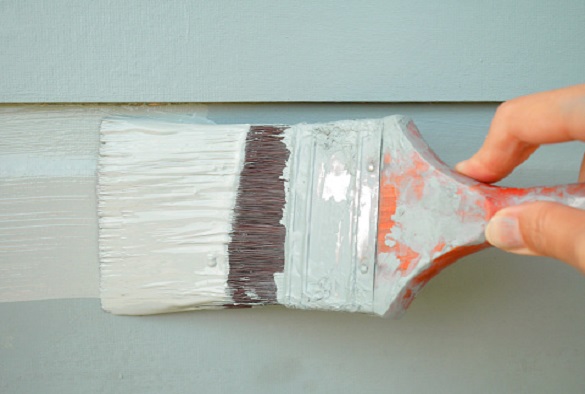
Hand holding brush painting timber wall
This article, featuring research by Professor Dmitry Shchukin, was first published in the Horizon EU Research & Innovation magazine:
Applying a coat of paint on the walls of a house may soon help to heat it, saving energy and reducing CO2 emissions. It could also clean the air that we breathe, breaking down chemicals and pollutants, and eliminating harmful pathogens.
In Europe, half of cities’ annual energy consumption goes to heating and cooling. Despite the EU’s move towards decarbonisation, 75% of heating and cooling comes from fossil fuels, whilst only 19% is generated from renewable energy.
‘Renewable energies are not widely used, and a lot of energy is being wasted,’ said Professor Dmitry Shchukin from the University of Liverpool’s Department of Chemistry.
He has developed a thermo-regulating paint that can absorb and release heat inside brick buildings, keeping rooms warm whenever necessary by using excess energy.
‘The main idea was to refurbish old houses with such paints,’ said Professor Shchukin. ‘If you have an old historical house, for example, you cannot destroy it and build a new one.’
Buildings are the largest energy consumer, he says. Most are old and energy inefficient, and are responsible for about 40% of total energy consumption and 36% of carbon dioxide (CO2) emissions in the EU.
The paint, which was developed as part of a project called ENERPAINT, could be used as a form of insulation to increase the energy efficiency of old houses without spending a fortune, he says. Throughout the day, it collects heat produced by radiators or even people, then releases it at night when the temperatures drop because boilers are usually turned off to save on bills. So how does it do this?
Phase-change materials
`It works very simply,’ said Professor Shchukin. ‘Paint and coating manufacturers have their own paints and we just supply some additives — about 5% — to the paint.’
These additives are so-called phase-change materials (PCMs), such as paraffins, salt hydrates and fatty acids, encased in protective nanometre-sized capsules which improve heat transfer. PCMs can store large amounts of thermal energy and change states — from solid to liquid and vice versa — without altering their own temperature.
Developing this paint, which is currently being tested, is part of wider project called ENERCAPSULE, where Professor Shchukin is designing suitable coatings to encapsulate PCMs at nanoscale to use in paints, textiles and medicines.
‘For the paints, we used salt hydrates due to their low cost and very high volumetric energy storage density,’ said Professor Shchukin. ‘However, these were very difficult to encapsulate as they are corrosive and hydrophilic (they dissolve in water).’
He was able to enclose salt hydrates in polymer shells as small as 10nm, which protects them from the surrounding environment but also allows them to respond to the heat in a controlled way. The materials that they use have been approved by the US Food and Drug Administration but not by the European Medicines Agency, according to Prof. Shchukin.
During the day, when these energy nanocapsules absorb and store heat at their melting temperature, the PCMs turn into liquid and during the cold nights they crystallise at a defined temperature, releasing heat and warming the room, Professor Shchukin explains.
He says European, Chinese and Russian companies are showing interest in their research, and that he now hopes to make nanocapsules for paints that can help cool buildings.